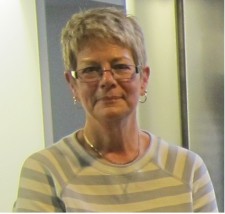Pulse Center for Patient Safety Education & Advocacy Marks Autism Awareness Month With Advice About Doctor and Hospital Visits

WANTAGH, N.Y., April 22, 2018 (Newswire.com) - April is Autism Awareness Month, and to mark it, Pulse Center for Patient Safety Education & Advocacy asked one of its patient safety and parent advocates, Arlene Reith, for her advice about helping a person with autism — especially a child — have a successful visit to the doctor or hospital.
Reith's insights were gained the hard way - by personal experience. "I'm the parent of two children," she says, "both diagnosed with Down syndrome and autism, who are non-verbal. In addition, I spent four and a half years in and out of a hospital with our son who was diagnosed at age nine with A.L.L. leukemia and died at age 13. We were told that our son was given the wrong chemotherapy only days before he passed but were assured it should be without consequences. That is the reason I have dedicated myself to teaching parents, family members, caregivers and staff about the importance of patient safety."
We are their VOICE. We owe it to those we hold dear to share our understanding with others.
Arlene Reith, Parent and Patient Safety Advocate
Dealing With Sensory Disorders in a Doctor's Office or Hospital Setting
The very first thing to share with a child's/family member's health care providers in a doctor's office or hospital setting is: "Just because my child/family member doesn't speak, does not mean that his/her hearing is not outstanding. Please do not speak of our child in the third person. We are all in the same room!"
First, we must concentrate on the patient's abilities:
I can't speak. But, I can hear — Talk to the patient.
Finding the patient's strength — Take the time to learn what works.
Communication, Hearing and Speaking:
Remember the following:
- Patient may only hear pieces of words or sometimes nothing at all.
- Too many sounds around; therefore, keep yourself or a trusted aide close by.
- Let the patient find their own words, even if they're not words you would use.
- Use pictures.
Consider the surroundings (environment) such as:
Too many lights/flickering.
Too much noise.
Smell sensations.
Moving too fast.
Consider Visual, Taste and Smell:
Distracted by visuals
May become disorganized
Rigid about what to eat
Texture of foods
May crave sharp tastes and smells
Tactile System: Inform health care providers with the following if they apply to this patient.
Touches people and objects constantly, needs heavy compression (e.g., weighted blanket, weighted vest) to localize.
Pica (bites nails, pencils, shirt, etc.)
Self-imposed isolation, distractibility, hyperactivity, negative response to light touch.
May not register pain.
May not feel it at all.
Reith concludes, "I stress the importance of preparing an 'All About Me' booklet, folder or computer file with much of the above info and giving it to your child's or other family member's health care providers."
"We are their VOICE. We owe it to those we hold dear to share our understanding with others."
Arlene Reith
Parent
Patient Safety Advocate
To learn more, visit www.Pulsecenterforpatientsafety.org.
Source: Pulse Center for Patient Safety Education & Advocacy
